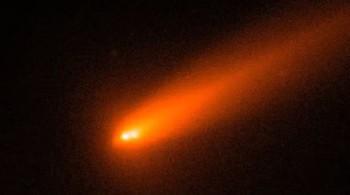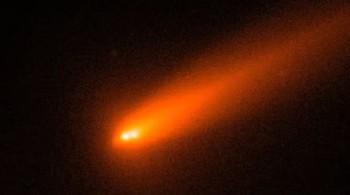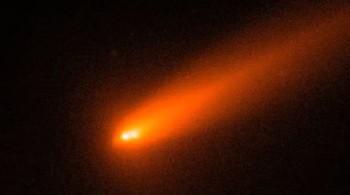
Comet C/2025 K1 (ATLAS) breaks into 3 after coming close to Sun
Comets have long been a source of fascination for astronomers and space enthusiasts alike. These icy bodies, originating from the outer reaches of our solar system, offer a glimpse into the formation and evolution of our cosmic neighborhood. Recently, a remarkable event has unfolded in the skies, as Comet C/2025 K1 (ATLAS) broke into three pieces after swinging too close to the Sun. This extraordinary occurrence has been captured by astronomers using Italy’s Copernicus telescope, providing a unique opportunity to study the dynamics of cometary fragmentation.
The comet, officially designated as C/2025 K1 (ATLAS), was discovered in May 2025 by the Asteroid Terrestrial-impact Last Alert System (ATLAS) survey. Initially, it was thought to be a single, intact comet, but as it approached the Sun, astronomers noticed a significant change in its structure. On October 8, the comet passed close to the Sun, and it was then that its nucleus became unstable, leading to a spectacular breakup.
The images captured by the Copernicus telescope reveal two large chunks of the comet, approximately 2,000 km apart, with a smaller third piece visible to the left of the pair. This fragmentation is a result of the intense heat and gravitational forces exerted by the Sun, which caused the comet’s icy surface to vaporize and its structure to disintegrate.
The breakup of Comet C/2025 K1 (ATLAS) is not an isolated event. Comets are known to be fragile and prone to fragmentation, especially when they approach the Sun. The heat and radiation emanating from the Sun can cause the comet’s ices to sublimate, creating a buildup of gas and dust that can lead to a catastrophic explosion. In some cases, this process can result in the complete disintegration of the comet, leaving behind a trail of debris that can be visible for weeks or even months.
The study of cometary fragmentation is crucial for understanding the composition and structure of these celestial bodies. By analyzing the breakup of Comet C/2025 K1 (ATLAS), astronomers can gain insights into the comet’s internal dynamics, including the distribution of ices and rocky particles within its nucleus. This knowledge can also help scientists better understand the potential risks associated with cometary impacts, which have been implicated in several mass extinctions throughout Earth’s history.
The use of advanced telescopes, such as the Copernicus telescope, has revolutionized the field of cometary research. These instruments enable astronomers to capture high-resolution images and spectra of comets, providing a wealth of information about their composition, size, and shape. The data collected from these observations can be used to predict the orbits and behavior of comets, allowing scientists to warn of potential impacts and plan for future missions to these celestial bodies.
In conclusion, the breakup of Comet C/2025 K1 (ATLAS) is a remarkable event that highlights the dynamic and unpredictable nature of comets. As astronomers continue to study this phenomenon, they may uncover new insights into the composition and structure of these icy bodies, as well as the potential risks associated with their fragmentation. The stunning images captured by the Copernicus telescope serve as a reminder of the awe-inspiring beauty and complexity of our solar system, and the many mysteries that remain to be uncovered.




